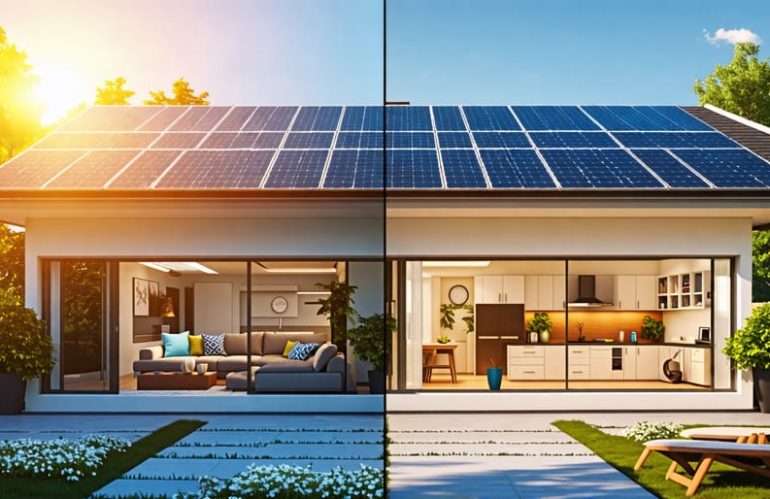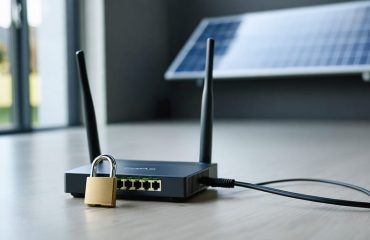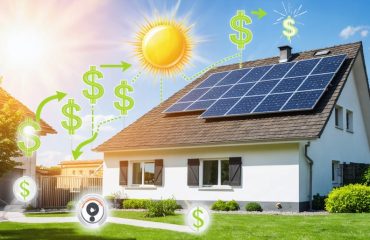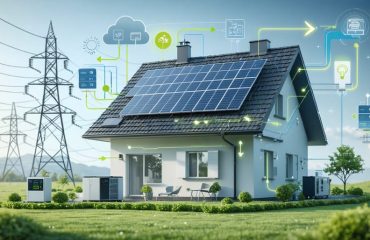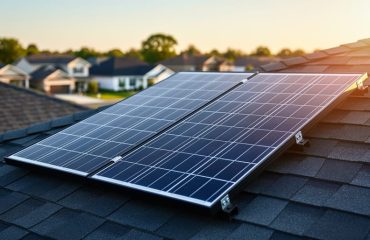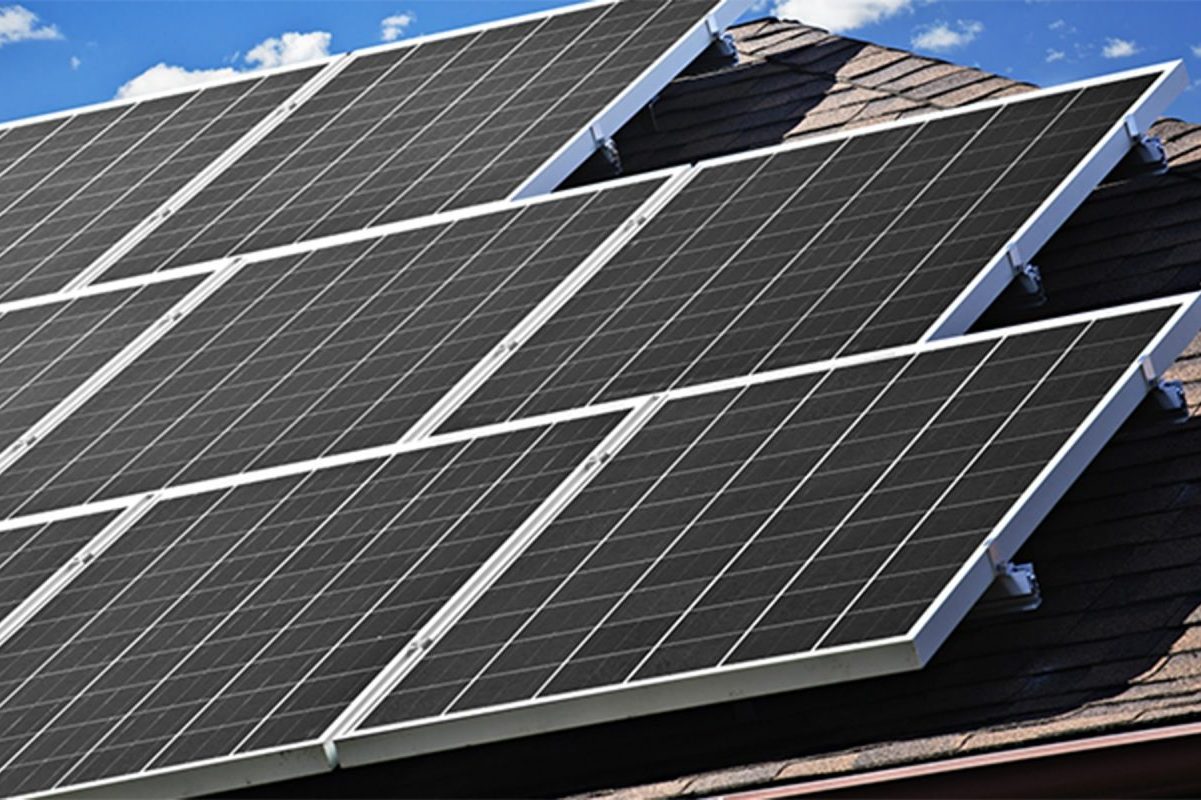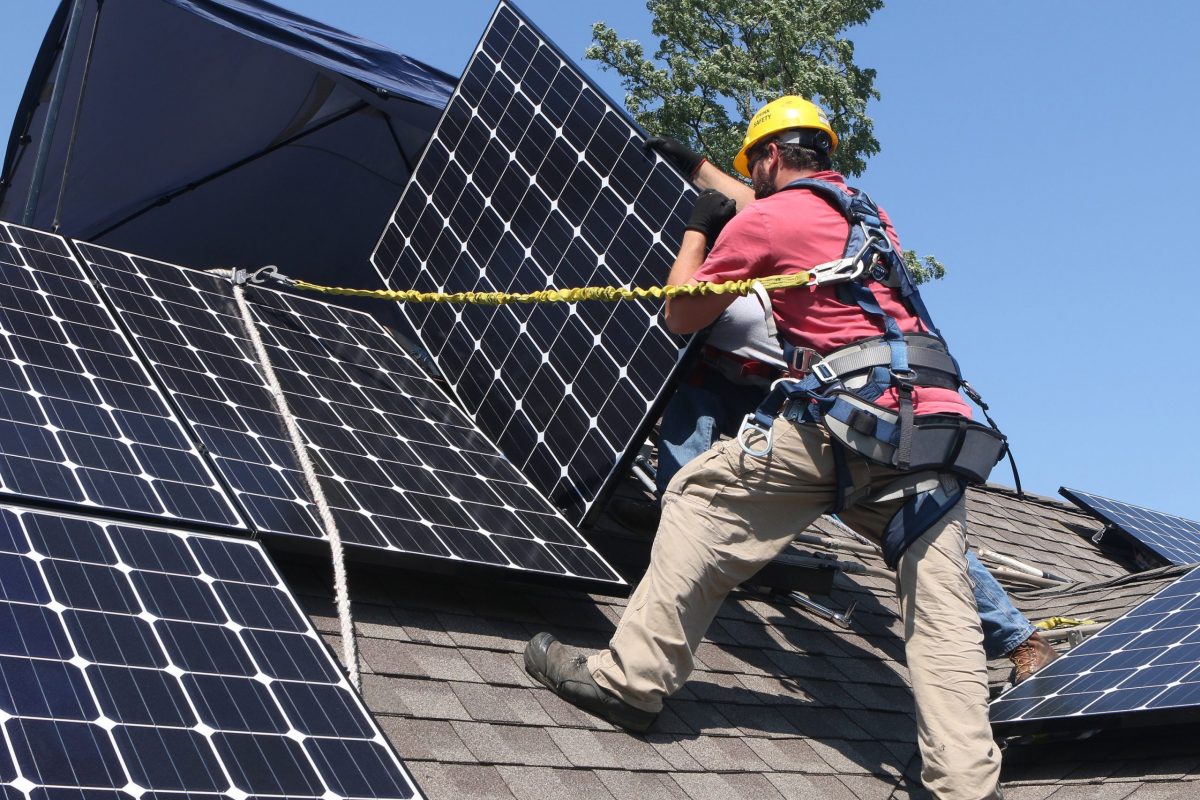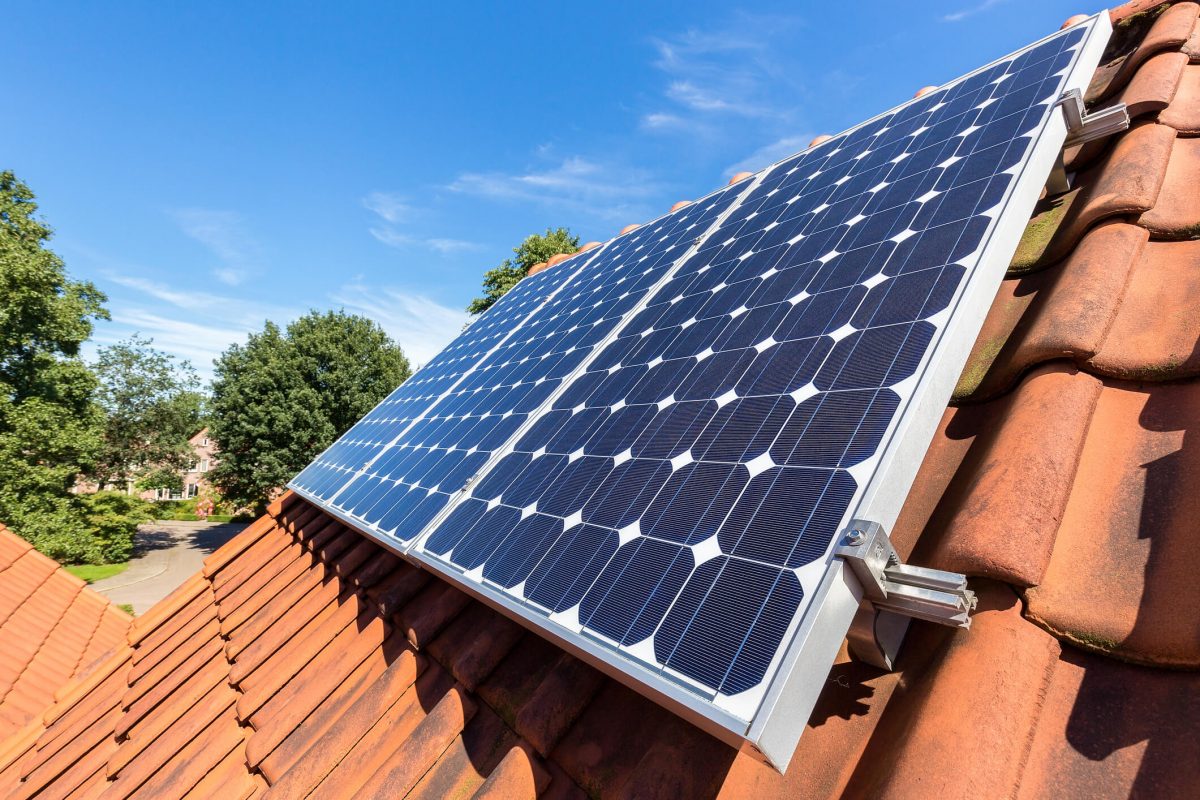Harness the sun’s power and slash your energy bills by installing solar panels on your two-family home. Solar systems for multi-unit properties offer a unique opportunity to generate clean, renewable energy for both households while maximizing available roof space. With the right setup, you can significantly reduce or even eliminate your reliance on the grid, insulating yourself from rising electricity costs. Plus, many states offer generous incentives and tax credits that make going solar even more affordable for two-family homes. Don’t let this chance to create a more sustainable future while saving money slip away – get a free solar quote today and take the first step towards energy independence for your dual-unit home.
How Solar Works for 2-Family Homes
Net Metering Basics
Net metering for 2-family homes allows excess solar energy produced to be credited back to both utility accounts. The credits are typically split evenly between the two units, reducing energy bills for both households. In some cases, a single solar array can be connected to separate meters, while in others, two arrays may be required. The specific setup depends on the utility’s policies and the property’s electrical configuration. By sharing the benefits of solar through net metering, multi-family homeowners can maximize their savings and contribute to a cleaner energy future together. Consulting with a local solar installer experienced in multi-unit installations is the best way to determine the optimal system design and metering arrangement for your 2-family home.
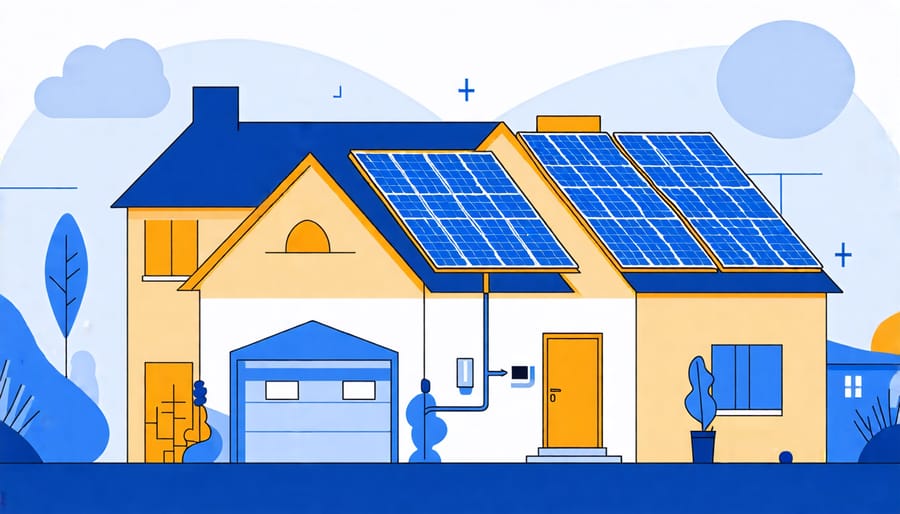
Shared Solar Arrangements
When it comes to splitting costs and benefits for solar panels on a 2-family home, there are several options to consider. One approach is to have each unit owner pay for their portion of the solar panel system upfront, then enjoy the energy savings and potential net metering credits individually. Another option is for one owner to cover the initial investment, then charge the other unit a fixed rate for their share of the solar electricity generated. Alternatively, owners can form a joint venture, sharing the initial costs and ongoing benefits equally. Some states even allow virtual net metering, where the solar credits can be allocated to different meters on the same property. By finding a fair arrangement that works for both parties, 2-family homeowners can maximize the financial and environmental advantages of going solar together.
Optimal Panel Placement
When installing solar panels on a 2-family home, optimal panel placement is crucial for maximizing efficiency and energy production. Consider the unique roof layout, orientation, and shading factors for each unit. Aim to position panels on south-facing roof sections for maximum sun exposure. If both units have suitable roof space, divide the panels evenly to ensure fair energy distribution. In cases where one unit has better solar potential, discuss cost-sharing options with your solar installer to find an equitable solution. With thoughtful planning and expert guidance, you can optimize your solar panel setup to benefit both families in your dual-unit home.
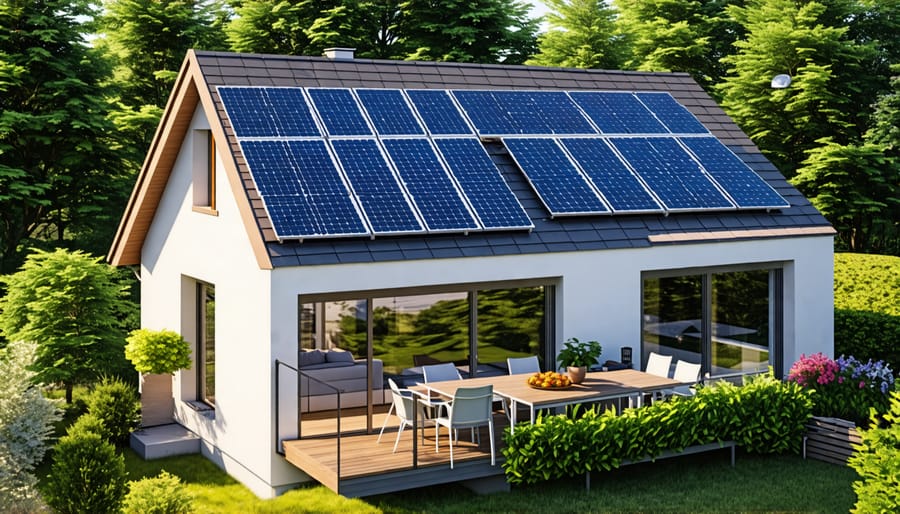
Financial Benefits and Incentives
Installing solar panels on your two-family home can lead to significant financial benefits and incentives. By harnessing the power of the sun, you can reduce or even eliminate your electricity bills, resulting in substantial savings over the lifetime of your solar panel system. Many states offer generous tax credits and rebates for homeowners who invest in solar energy, which can help offset the initial installation costs.
The federal government provides a tax credit of 26% of the total cost of your solar panel system, which can be claimed on your income taxes. Some states offer additional tax credits, further reducing your out-of-pocket expenses. Many utility companies also provide rebates or incentives for solar installations, such as net metering programs that allow you to sell excess energy back to the grid, earning credits on your utility bill.
Financing options, such as solar loans or power purchase agreements (PPAs), can make going solar more accessible and affordable for two-family homeowners. With a solar loan, you can spread the cost of your system over several years, often with low interest rates. PPAs allow you to purchase the electricity generated by the solar panels at a fixed rate, typically lower than your current utility rates, without the upfront cost of installation.
Over time, the energy savings from your solar panel system can more than offset the initial investment, providing a strong return on investment (ROI). As electricity prices continue to rise, your savings will only increase, making solar an even more attractive option for two-family homeowners looking to reduce their energy costs and protect against future rate hikes.
In addition to the direct financial benefits, installing solar panels on your two-family home can also increase its value. Studies have shown that homes with solar panels sell faster and for a higher price than comparable properties without solar. This means that investing in solar not only saves you money on your energy bills but can also pay off when it comes time to sell your home.
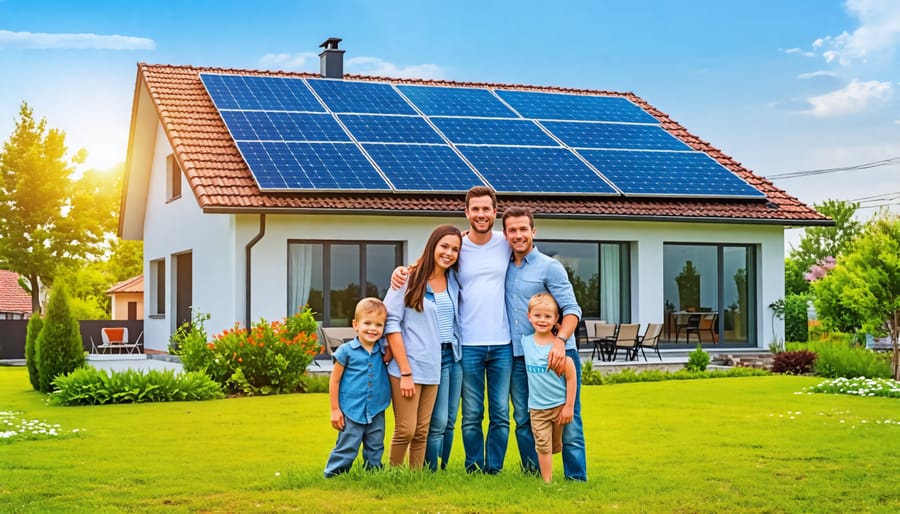
Environmental Impact
Installing a solar panel system for your 2-family home can significantly reduce your carbon footprint and reliance on the grid. By harnessing clean, renewable energy from the sun, you’ll be doing your part to combat climate change and promote a more sustainable future. A typical 2-family solar installation can offset several tons of carbon dioxide emissions annually, equivalent to planting hundreds of trees or removing multiple cars from the road. Moreover, by generating your own electricity, you’ll decrease your dependence on fossil fuel-based power plants and help alleviate strain on the grid during peak demand hours. With a solar system tailored to your energy needs, you can take pride in knowing that you’re not only saving money on utility bills but also contributing to a cleaner, greener environment for generations to come. Embracing solar power is a simple yet powerful way to demonstrate your commitment to environmental stewardship while enjoying the numerous benefits of energy independence.
Getting Started Checklist
Installing solar panels for a 2-family home requires careful planning and consideration. Here’s a step-by-step guide to help you get started:
1. Assess your energy needs: Determine the current energy consumption for both units in your 2-family home. This will help you estimate the size of the solar system required to meet your energy demands.
2. Evaluate your roof: Check the condition, orientation, and available space on your roof. An ideal roof for solar panels should have minimal shading, face south, and have enough space to accommodate the necessary number of panels.
3. Get quotes from reputable installers: Research and contact several local solar installation companies. Request detailed quotes that include the cost of equipment, installation, permits, and any applicable incentives or tax credits.
4. Review financing options: Explore various financing options, such as purchasing the system outright, taking out a solar loan, or opting for a solar lease or power purchase agreement (PPA). Consider the long-term financial benefits and potential savings on your energy bills.
5. Obtain necessary permits: Work with your solar installer to obtain all required permits from your local government and utility company. Your installer should handle this process, but it’s essential to ensure that all paperwork is completed before installation begins.
6. Schedule the installation: Once you’ve chosen an installer and secured financing, schedule the installation date. The process typically takes a few days, depending on the size and complexity of your system.
7. Connect to the grid: After installation, your system will need to be inspected and approved by your local government and utility company. Once approved, your system will be connected to the grid, and you can begin enjoying the benefits of clean, renewable energy.
By following these steps, you’ll be well on your way to a successful solar panel installation for your 2-family home, reducing your carbon footprint and potentially saving money on your energy bills for years to come.

